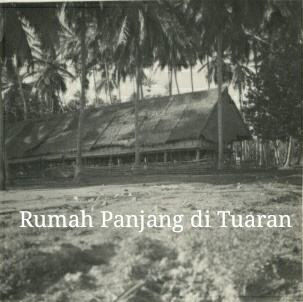LEGEND AND EARLY HISTORY OF THE KUIJAU TRIBE
- Marwan Bin Musa
- Feb 26
- 3 min read
In ancient times, during the era of our ancestors, there was a couple named Panankis and Tababayong. This couple had a son named Kinalu, who later had seven sons: Lugu, Matahip, Gupu, Gonip, Kambu, Tindou, and Pinsad.When the youngest son, Pinsad, was born, something unusual happened—he was born holding an egg. The egg later hatched into a magical rooster with a copper beak and golden feet. One day, as Pinsad grew older, he had a dream where the magical rooster spoke to him, telling him that the time had come for him and his family to move, following the path shown by the rooster. Pinsad told his parents and siblings about his dream, and they, along with other families, agreed to relocate and follow the magical rooster.
The Journey of the Kuijau Tribe
As they traveled, they arrived in Ranau, where they decided to rest. At this moment, the magical rooster crowed for the first time, and some family members decided to settle there.Continuing their journey, they crossed the Nukakatan River and followed the Crocker Range to Bundu, where some members of the group went missing while hunting and ended up reaching Ulu Papar. When they arrived at Randayong, another family felt too exhausted to continue and decided to settle there. However, the magical rooster kept leading the rest forward until they reached a place near a Tambui tree.
This place is now known as Tambunan.
The journey continued until they reached Bingkor, where Matahip’s wife had to stop to give birth. Meanwhile, the rest of the family continued their journey. Upon reaching Bingkor, the magical rooster disappeared and returned to the heavens.Once Matahip's wife recovered after giving birth, they resumed their journey in search of Matahip’s siblings. However, when they reached Navod, they could no longer find any footprints left behind. As a result, Matahip and his family decided to settle in Navod.
The Reunion of the Seven Brothers
Two of the brothers, Tindou and Kambu, went back in search of Matahip, but they could not find him. The remaining six brothers vowed to keep searching until they reunited with Matahip. Eventually, with great joy, the seven brothers finally reunited in Navod. After much discussion, Matahip and his family decided to stay in Navod. However, the eldest brother, Lugu, did not want Matahip and his family to live there alone, so he and his family also decided to settle in Navod. Meanwhile, the other five brothers continued their journey to other places.
The Rise of Gunsanad and the Kuijau Tribe's Role in History
Matahip had a son named Kina, and Kina had a son named Gunsanad.Gunsanad became a close friend and loyal ally of the British Resident E. H. Barraut before the Kuijau Rebellion of 1896. After the rebellion, the British North Borneo Chartered Company (SBBUB) appointed Gunsanad as a Native Chief. He served with distinction for 40 years, playing a key role in quelling the Rundum Rebellion of 1915.Gunsanad had a son named Sundang, and many of his descendants still reside in Keningau today.
The Expansion of the Kuijau Tribe
The Kuijau people expanded and settled in various areas such as Bingkor, Bayayo, Bandukan, Minansut, Binuvang, Biah, Togudon, Sinagang, and Apin Apin in Keningau District. Some members of the tribe also intermarried with the Murut people.The Gana tribe originated from Navod in the Melapi River area, while the Kuijau tribe originated from Lampaki in the Upper Melapi River. The Tulun Kinasaraban people and the Upper Papar tribes are descendants of the Kuijau people.
Sources :
Permission Granted by: Juliana Jukin, Johnny Sibangun
References: Owen Rutter (1929),
Elsie Bewsher (1988), Anggan (2004),
Borneo Herald (16.1.1930), PS Shim (2007)
Story Editor & Compiler: Kumis Kumis
Illustration: Wallace (1896)







Comments